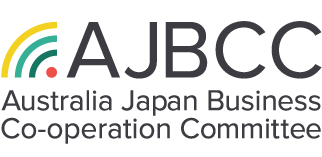31 May COVID-19: How is Japan performing?
With all eyes on Europe and the US, Japan is often under the radar in how it is both handling and being impacted by the COVID-19 virus. The death toll from the virus in Japan with a population of 126 million stands at 863 people in late May. At the same time, Australia with a population of 25 million has recorded 103 deaths. Considering Japan is much more heavily urbanised and has a large elderly population, Japan’s low figures are surprising.
Although Japan was somewhat slow to implement mitigation measures for the virus, the overall performance to date has been heartening. In addition to Japan successfully isolating small clusters before they grew, there are a number of other theories put forward to explain the low numbers from Japan. These include:
- Cultural norms which eschew physical contact (such as greetings by shaking hands or kissing on the cheek).
- Long cultural experience and population acceptance of wearing masks to protect others or oneself (from colds or spring hay fever caused by cedar and other pollens).
- Diligence with hygiene and food safety enshrined in the food service business.
- Cultural fondness of statistical counting and its associated provision of a useful spectrum of data.
- A community willing to follow Government directives – compliance rates are high.


The first confirmed case of COVID in Japan occurred on 16 January 2020, with the first death on 13 February. Entry to Japan from China’s Hubei province was banned on 3 February. Like Australia, Japan too had cruise ship COVID related transmissions – the Diamond Princess docked in Yokohama 3 February. On 27 February schools were closed. 5 March quarantine restrictions were imposed on visitors from China and Korea and this was extended to Spain, Italy, Switzerland and Iceland. However, on 3 April entry from 73 countries and regions was banned (Australia closed its borders on 19 March). On 7 April the Government announced a State of Emergency effective until 6 May. This applied to 7 prefectures (Japan has 47) and included the nation’s most populous ones such as Tokyo, Osaka and Chiba. It covered 5 main areas and most importantly:
- required individuals to stay inside and avoid unnecessary outings.
- mandated the closure of schools, welfare facilities, movie theatres and department stores.
Other areas clarified the Government’s powers in relation to virus mitigation measures.
Teleworking
Despite Japan’s Society 5.0 roadmap, work practices have been very slow to embrace the notion of “work from home” or “telework” as it is referred to in Japan. The Governor of Tokyo, Yuriko Koike urged Tokyoites on 25th March to “stay at home” and “work from home” to limit the increase in the number of cases. A survey conducted by the research institute of one of Japan’s major insurance companies Dai-ichi Life, found that 60% of full time employees at Japanese companies responded that “their work prevents them from working from home.” Employees of large companies in the survey (over 1,000 employees) indicated that 30% had experience of working from home. This compared to companies with under 100 employees where only 10% had experienced teleworking. So there is much education and assistance to be done in the small and medium enterprise company segment.
On 16 April, the Government extended the State of Emergency to all 47 prefectures. As Japan headed into its annual vacation break, known as Golden Week -a collection of national holidays occurring at the end of April and early May, the domestic and international passenger traffic collapsed. Japan’s bullet train recorded a drop of 90% in reservations over the Golden Week period compared to 2019 as the population stayed home.
During Golden Week, Prime Minister Abe announced the extension of the State of Emergency until 31 May. After Golden Week, and monitoring the number of detected cases, the Government announced on 7 May the relaxation of restrictions in 26 prefectures, which included the opening of restaurants, hotels, museums, karaoke – restrictions were not uniformly eased but differed by prefecture. On 14 May, Prime Minister Abe announced that restrictions would be lifted on 39 of the prefectures. However, this still left the most populous prefectures, including Tokyo, remaining under significant restrictions until 25 May when the state of emergency was revoked – a few days earlier than its planned end of 31 May.
The imposition of the State of Emergency was not without significant impact on Japanese businesses, necessitating a huge fiscal stimulus – itself underscored by the announcement that Japan’s economy shrank by 0.9% in the first quarter of 2020. This came on the heels of negative growth in the last quarter of 2019 due to the impact of the increase in Japan’s consumption tax together with the effect of the typhoon and flooding with significant property and infrastructure damage. The negative growth of two quarters has technically pushed Japan into recession. It will be joined by a number of other countries as data is progressively released.



